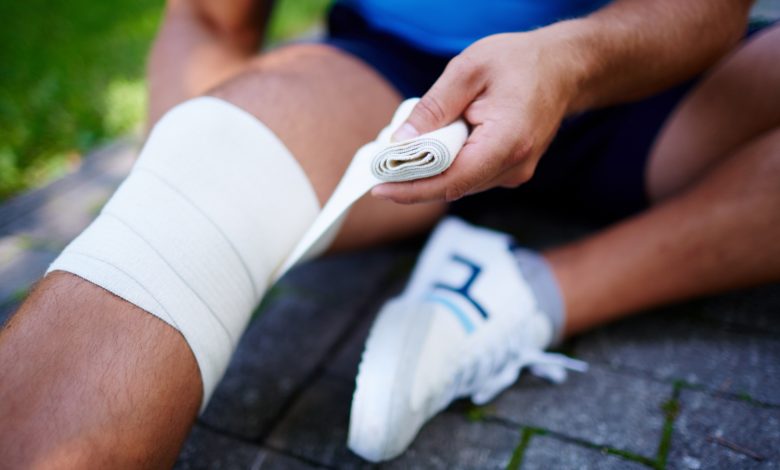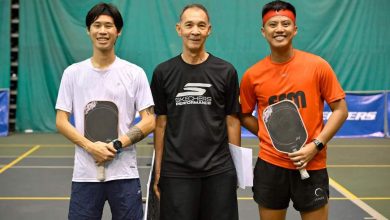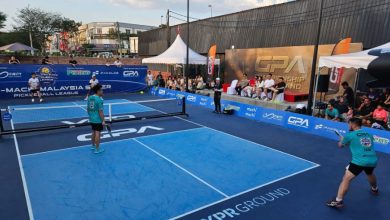Protect Yourself on the Court: Read These Essential Tips to Avoid Pickleball Injuries!

It’s official—pickleball is likely the world’s fastest-growing sport, according to a recent finding by the Department of Orthopaedic Surgery at the University of Alabama at Birmingham (UAB). But amid its soaring popularity, are people paying enough attention to safety? Experts at UAB have reported a concerning rise in pickleball-related injuries.
More specifically, they found a 90-fold increase in fractures sustained while playing the sport, especially among older picklers, with the biggest surge occurring in the four-year period beginning in 2020.
This shouldn’t come as a surprise—pickleball’s soaring popularity means more people are taking up the sport, and with that, it’s only natural that more players are at risk of injury. And with the dynamic, fast-paced nature of the sport, quite a few it appears are getting hurt playing pickleball.
The Physical Toll of Pickleball

The most common pickleball-related injuries, according to UAB Sports and Exercise Medicine orthopaedist Thomas Evely, D.O., are muscle strains and ligament sprains.
“Pickleball requires quick movement and balance that can lead to acute injuries from fall or overuse-type injuries,” Dr Evely pointed out.
In particular, ankle injuries and knee pain have become commonplace among picklers. The former is a major issue for players of pickleball because the sport involves sudden starts and stops, and quick, dynamic lateral movement. The latter is a pickler’s curse because knee joints can get easily strained by the frequent bending and twisting of the knees during games. Hamstring strains are also a common injury among picklers, as is elbow pain (colloquially known as “pickleball elbow,” which can be caused by repetitive stress on the elbow.
This increase in the number of pickleball-related injuries is unfortunate. But then again, it’s the nature of the beast so to speak. Playing pickleball, or any sport for that matter, can be physically demanding and can take a heavy toll on the human body, leading to injuries. So, yes, injuries are part of the game.
Key Steps to Prevent Pickleball Injuries
But while injuries may be part of the game, there are precautions that players can take to at least reduce the very real risk of injury.
“Taking steps to avoid injuries is crucial for several reasons,” Dr Evely said. “By preventing injuries, you can prevent pain and long-term damage to muscles, joints and bones; minimise downtime and continue to stay active in the sport, perform better, and enjoy the game more.”
One simple yet effective first step is to focus on improving fitness and building strengths. Something picklers can do with regular strength and conditioning workouts, with a focus on strengthening the core, legs, and upper body. These exercises will whip you up to game shape, help improve performance and minimise injury risks. They’ll even make you look and feel good as a bonus!
Another important step is to warm up before games and cool down thereafter. Performing proper warmups—about 10–15 minutes would be ideal—ensures that your muscles are loose and flexible, your ligaments are stretched and ready, and your heart is working optimally for sports. A proper cooldown—5–10 minutes of walking and stretching after playing—is just as vital to get your body relaxed, to get your blood pressure to normalise, and to prepare your muscles for recovery.
Learning the correct techniques and choosing the proper equipment are equally important as well. The former helps ensure correct body mechanics and natural movement, in turn reducing the stress on your muscles, joints, and ligaments. It also keeps your body from performing awkward and unnatural movements that needlessly strain your muscles and ligaments, potentially causing injuries. The latter, on the other hand, ensures maximum comfort that minimises wear and tear and reduces undue strain.
Resting is critical, too, for injury prevention as this is the time your body recovers from all the strain that comes with playing. Just make sure you give it enough time to heal, especially after gruelling games. In addition, listen to your body! Do not play through aches and pains as they are signs that either your body needs a break, or something is wrong with it. Rather than risking further injury, take a moment to rest and apply ice where it’s needed. If the pain persists or is debilitating, go see a doctor right away to get the proper treatment.
Understand the Value of Injury Prevention
Of course, we know sitting out a few games is easier said than done. But it is the better alternative to missing weeks or even months of action because of injury, whose recovery period can be a few weeks for minor injuries or several months for major ones.
So, please, please, please . . . Be careful when you play. Get fit and take the necessary steps to reduce injury risks. We want you to enjoy this game we love, not get hurt playing it.





